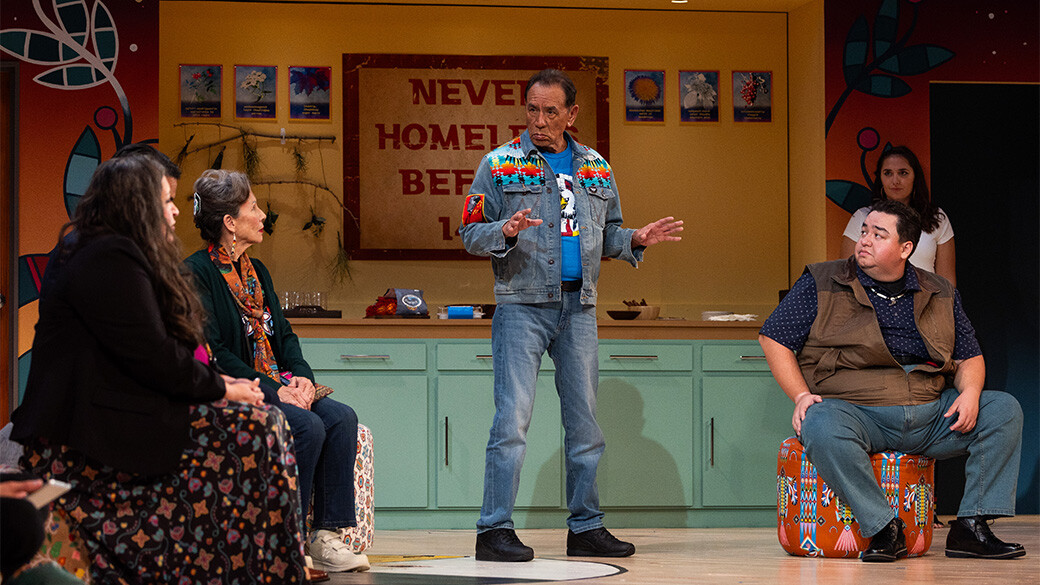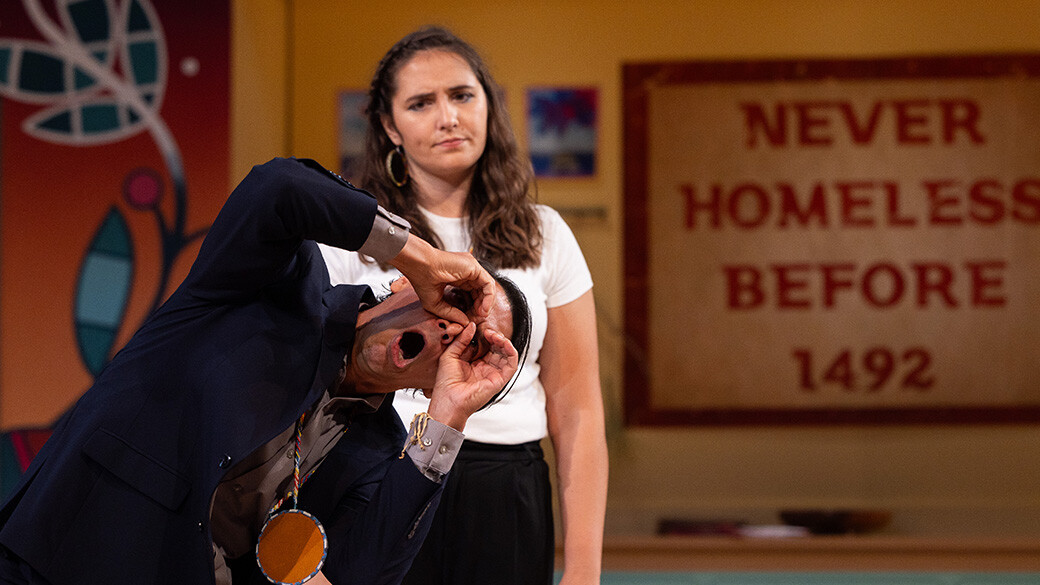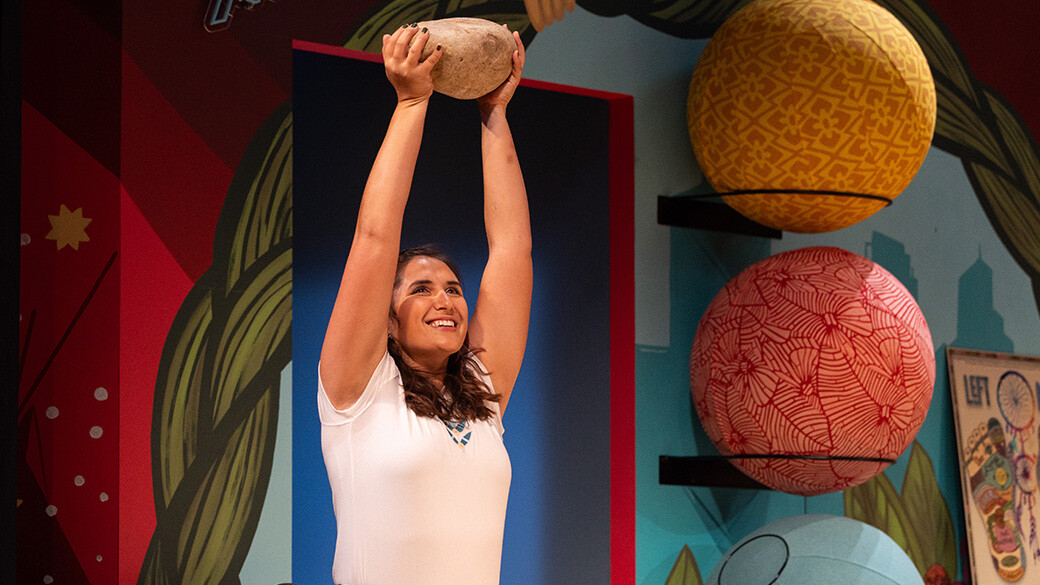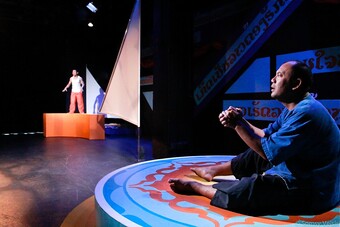Then head up this way to the Minneapolis American Indian Center and the current center of the Center. Rather, here, where we are gathered.
–Robert Dakota, For the People
The word “center” carries significance, obviously. It is good to be in the “center” of things. If someone takes “center stage,” they assume a space of importance and value; they are seen.
For six decades, the Guthrie Theater in Minneapolis, Minnesota, has occupied a myriad of cultural “centers”: a historic center of the regional theatre movement, an artistic center for professional theatre in the Midwest, and an erudite center for European “classics” (Shakespeare, the Greeks, Moliere, etc.). Indeed, I came of age on a fertile shelf of wind-swept prairie called North Dakota, nowhere near my perceived center of anything. Word on the plains was that if you wanted to witness Shakespeare done well, you must make the five-hundred-mile journey to the Guthrie Theater. In my first year of college, I witnessed a brilliant, anachronistic production of Hamlet directed by Garland Wright on that original, iconic thrust stage. An eight-hour drive to the center changed my life. From that day forward, I recognized my vocation in the theatre.
For the first time in its sixty-year history, the “center” of the Guthrie Theater symbolically shifted.
The notion of center differs between cultures. In his essay “The Roots of Renewal” in Seeing with Native Eyes, Joseph Epes Brown recounts a Native American understanding of spatial relationships, particularly the concept of the “center.” In Brown's explanation, a “ritually defined center” transcends a basic understanding of “circumference” or “where a persona stands.” Brown elaborates:
It is also taken to be the actual center of the world. It is understood as an axis serving as a bridge… an axis that pierces through a multiplicity of worlds…. It symbolizes the way of liberation from the limits of the cosmos. Always, vertical ascent is impossible unless the starting point be the ritual center.
Through this Native perspective, the “ritual center” is more than a fixed point in the exact midpoint of a ring. It is the symbolic center of and passageway to creation.
For the first time in its sixty-year history, the “center” of the Guthrie Theater symbolically shifted. From 7 October through 12 November 2023, a play co-written by two Native American playwrights was performed on one of the Guthrie’s mainstage theaters (center stage). Of course, if we truly embrace the message of the now standard land acknowledgments publicly shared before theatre productions, Indigenous peoples already held this center. In a monumental moment of inclusion, the Guthrie Theater finally officially, symbolically, and tangibly acknowledged this fact. Through their satirical comedy For the People, Ty Defoe and Larissa FastHorse “pierced through a multiplicity of worlds” and reclaimed the ritual center of a premier regional theatre.

















Comments
The article is just the start of the conversation—we want to know what you think about this subject, too! HowlRound is a space for knowledge-sharing, and we welcome spirited, thoughtful, and on-topic dialogue. Find our full comments policy here